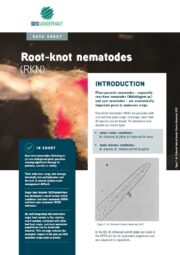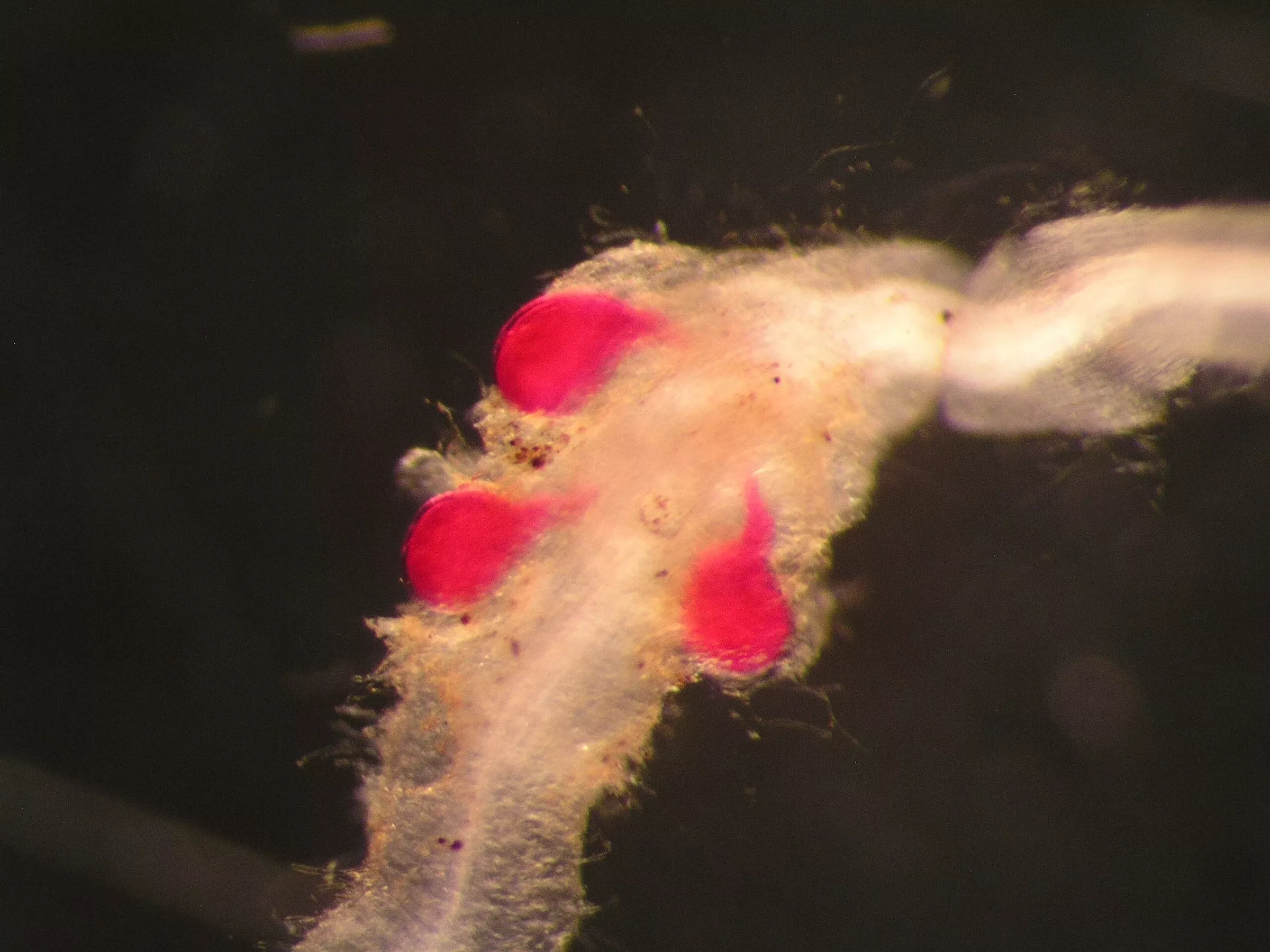Root knot nematodes (Meloidogyne) are widespread plant parasites that cause considerable damage to the cultivation of potatoes, carrots, or salsify.
What are the symptoms of root-knot nematodes?
Meloidogyne chitwoodi and Meloidogyne fallax cause damage in crops such as potato, carrots, black salsify, and certain flower bulbs (gladiolus, dahlia). Yield reduction is rarely observed. However, their presence has a strong financial impact, as they often make these crops commercially unacceptable. In sugar beet, they can reduce plant stand. Meloidogyne incognita and Meloidogyne javanica affect normal sugar beet root development.
- Above-ground symptoms: often absent in sensitive crops.
- Below-ground symptoms: the disease is confirmed by the presence of knots (galls) on roots and tubers. The extent of the damage depends on the cultivar, population density, temperature, and length of the growing season.
Root-knot nematodes also have an economic impact. Their presence in potato seed tubers, dahlia, and gladiolus bulbs leads to the refusal of the plant passport or phytosanitary certificate required for movement within or outside the EU.
How are root-knot nematodes spread?
Root-knot nematodes are mainly found in sandy and sandy loam soils. They have a wide range of host plants and can multiply very rapidly. Introduction occurs through the import of infected soil, plant material, or irrigation water. Prevention should be the first line of defence. If nematode populations become established in a field, further spread must be avoided and existing populations should be eradicated.
How to control root-knot nematodes?
Control of root-knot nematodes can be achieved by black fallow or inundation, though this is far from feasible on all plots.
A well-considered crop rotation - including population-reducing crops before planting susceptible ones and the use of short-cycle crops - can help control the problem. For example, in 2020, SESVanderHave began official variety trials in the Netherlands with a variety showing very high resistance to root-knot nematodes and tolerance to beet cyst nematodes. Growers who include damage-sensitive crops such as potatoes, seed potatoes, carrots, or salsify in their rotation can use sugar beet as a 'break crop' to greatly reduce the risk of losses in quality, yield, and phytosanitary certification.

